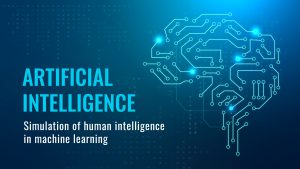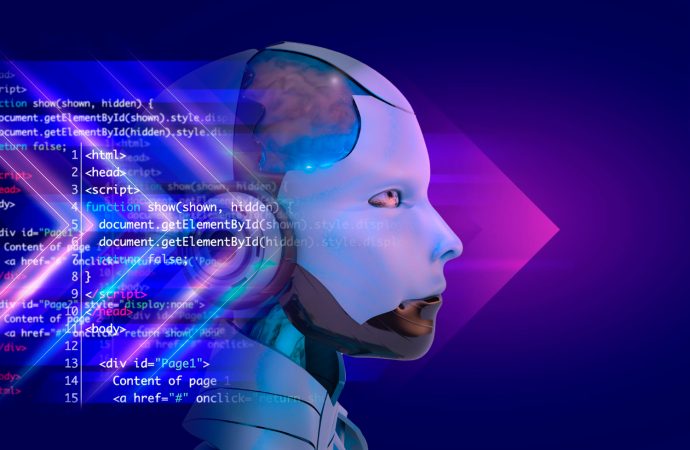Introduction: Fundamentally, GPT-3 represents an advanced linguistic model that harnesses the power of AI for analyzing text sections. This technique utilizes the predictive analysis to anticipate the succeeding word. It sets the groundwork for the impressive abilities of ChatGPT and the ability to understand language within its context. This innovative architecture, originally developed by Google
Introduction:
Fundamentally, GPT-3 represents an advanced linguistic model that harnesses the power of AI for analyzing text sections. This technique utilizes the predictive analysis to anticipate the succeeding word. It sets the groundwork for the impressive abilities of ChatGPT and the ability to understand language within its context. This innovative architecture, originally developed by Google in 2017, serves as a key factor as part of ChatGPT’s training utilizing unsupervised learning techniques. Additionally, it demonstrates its capacity to pay attention on important sections of input strings.
Knowledge Source of ChatGPT:
The information originates from a wide-ranging educational data. It consists of approximately 45 terabytes of text records from multiple origins.
Web Data: It contains a refined edition from Common Crawl, a massive collection of gathered text from online sources. It includes web sites, weblog entries, press articles, and various internet content.
WebText2 is a dataset from OpenAI that contains web pages from Reddit hyperlinks. These URLs have at least of at least 3 upvotes and focus on ensuring the quality of the documents. Nevertheless, Content from Wikipedia are not part of the given dataset.
Publications1 and Publications2 are digital book archives that have been selected for their relevance and widespread recognition. Nevertheless, the information is limited available related to these books, which causes worries related to potential copyright infractions.
Wikipedia represents a carefully selected compilation containing articles from the Wikipedia in English. The posts are chosen based on their excellence and pertinence to a diverse array of areas.
The training of the model included roughly half a trillion tokens, picking illustrations from all datasets in diverse percentages. It consists of a remarkable 175 billion variables that encapsulate the knowledge gained in the training process. The primary phrase sequences are eliminated. It’s crucial to remember that the ChatGPT model is without internet access during the process of responding to user inquiries.

Image by rawpixel.com on Freepik
The Learning Process:
The journey of ChatGPT’s development involved several crucial stages:
The gathered written information went through preprocessing to eliminate unwanted factors including HTML tags, URLs, and special characters. The content was subsequently divided into sentences and blocks before being tokenized into separate words.
Language Modeling: The language model of GPT-3 went through unsupervised training for predicting the following word as part of a progression using the words that came before. The training procedure enabled the model to enhance knowledge about language rules, sentence structure, and contextual associations in sentences. The procedure produced 175 billion parameters establishing relationships linking input and output text.
After pre-training, GPT-3 went through fine-tuning for specific language tasks, including translation, the tasks of summarizing and completing text. This tweaking technique applied monitored instruction. This adjustment process modified the model’s settings to reduce disparities among forecasts and the accurate results for every assignment. The objective was to enhance the model’s capability and exactness.
Deployment: The AI model trained on GPT-3 was uploaded to the cloud, open to users by means of an API. Individuals can enter text, and the system produced resulting text using the provided input.
Tokenization, Vocabulary, and Embedding:
To effectively process natural language, ChatGPT employs tokenization, vocabulary, and embedding techniques:
The system commences with the input series. This can be different kinds of written content, including phrases, sections, or whole records.
Tokenization: The input sequence undergoes tokenization, splitting it into words and subwords. GPT-3 works using tokens instead of raw text, enabling effective language processing.
Embedding: Every token is connected to a large-scale embedding vector that represents its semantic. The embeddings are acquired in the process of training, empowering the model to capture context.
Position Embeddings: To grasp the spatial arrangement of every token in the series, location embeddings are included to the element embeddings.
The Decode-Transformer Model – The Core:
In the center of The structure of ChatGPT sits the Decode-Transformer framework. The integrated tokens make progress by a chain of tiers. Every layer executes operations to modify the input data. The layers slowly construct an interpretation of the given sequence that captures its significance and context.
Self-Attention Mechanism:
An important element of the DT model employs the self-attention mechanism. This enables the system to evaluate the importance of every word regarding previous ones in accordance with the context and sense. The system allows ChatGPT to identify the key data in the given input stream.
Predicting the Next Token:
The vectors with context produced by the self-attention mechanism help in generating a likelihood distribution covering all potential elements that have the potential to follow in the order. The distribution aids in finding the probable subsequent token. This token with the highest chance is subsequently created as the result, ensuring appropriate responses in the given context.
Iterative Process:
This token production process advances in an iterative manner. Every recently created token gets added to the initial sequence in the subsequent stage of analysis. The continuous method enables the system to improve its comprehension of the surrounding environment. When it produces increased output, the model develops more reliable in its interpretation.
Conclusion:
The structure of ChatGPT, constructed on the impressive progress of GPT-3, demonstrates the enormous potential of machine learning language models in NLP. This demonstrates the impact of AI in revolutionizing the method of processing and interpret human speech. With its vast knowledge database to the self-awareness process, ChatGPT exhibits the groundbreaking strength of models utilizing transformers. Consequently, it has evolved the area of language processing. While we keep investigating the potential of AI-based interaction, it is essential to deal with ethical aspects and guarantee responsible utilization of these robust language algorithms. These individuals an important role in determining the destiny of HCI. With additional progress, ChatGPT has the potential to disrupt various sectors and redefine our interaction with technology.

















Leave a Comment
Your email address will not be published. Required fields are marked with *